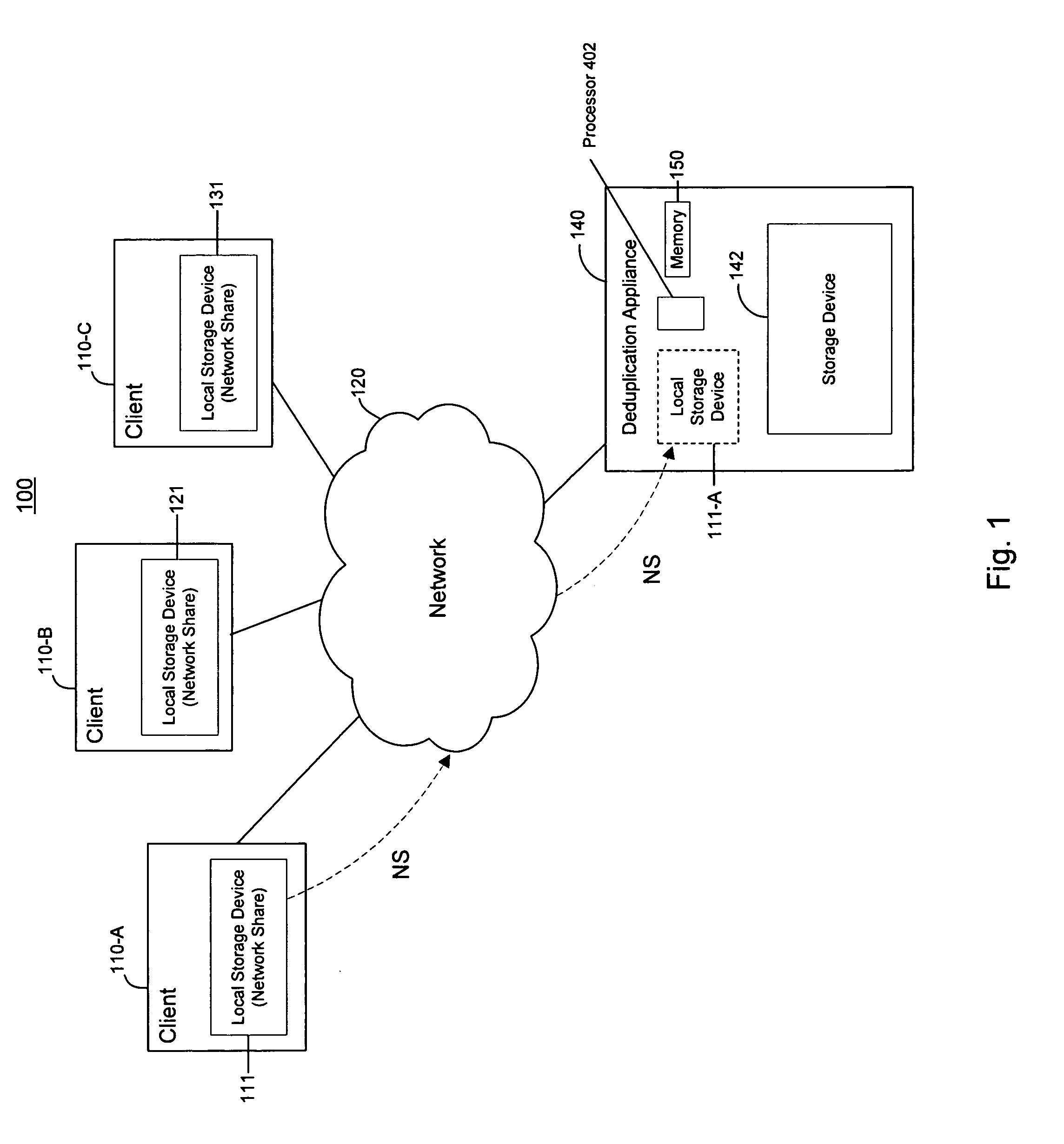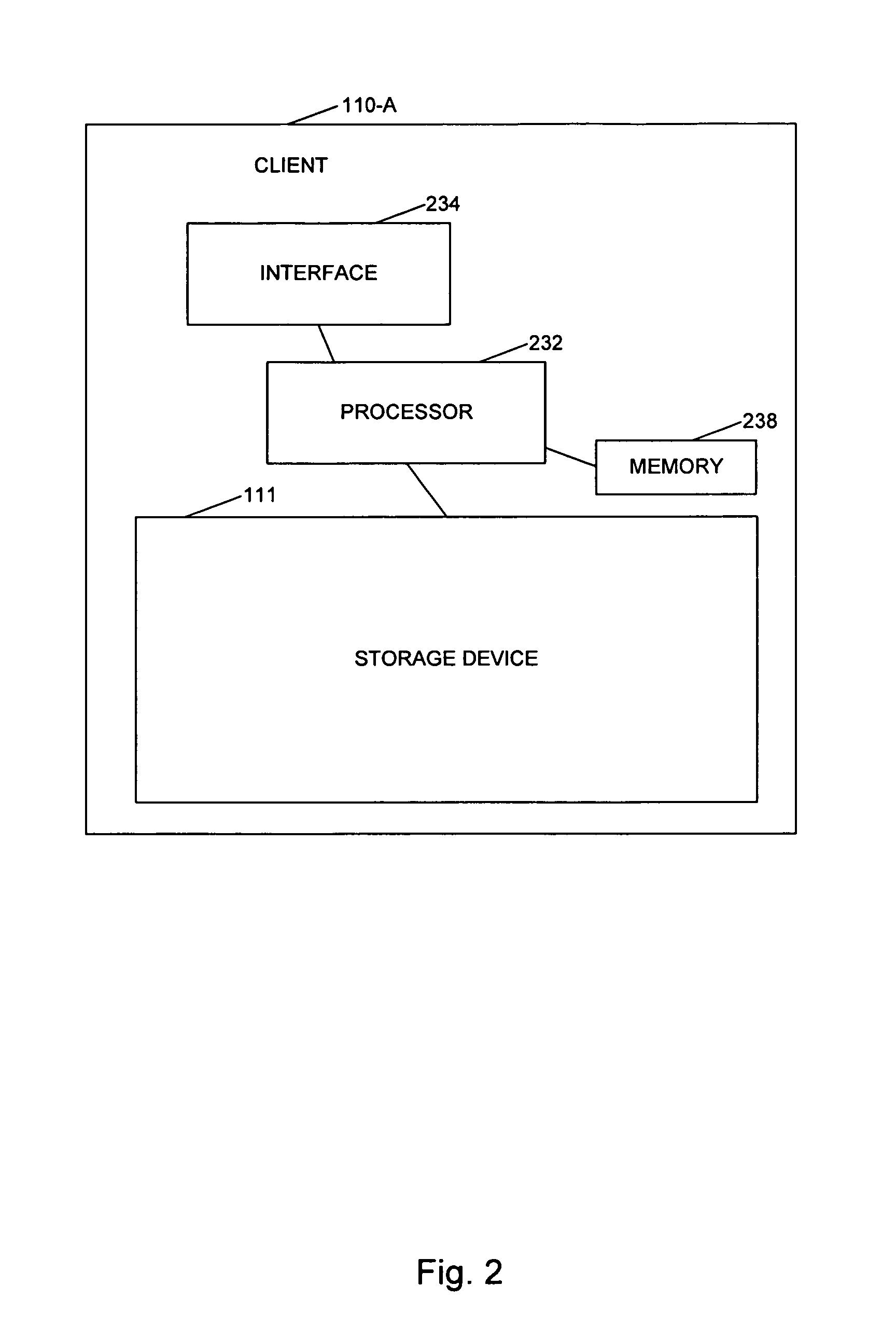Data deduplication
a data and data technology, applied in the field of data deduplication, can solve the problems of requiring a lot of network bandwidth, and achieve the effects of reducing the storage requirements of clients, reducing the complexity of implementation and management, and saving network bandwidth
- Summary
- Abstract
- Description
- Claims
- Application Information
AI Technical Summary
Benefits of technology
Problems solved by technology
Method used
Image
Examples
first embodiment
[0031]In accordance with the invention, the deduplication appliance 140 accesses data located on the local storage devices 111, 121, and 131 via the network 120, deduplicates the data, and stores the deduplicated data in the storage device 142. To enable access to the data on the local storage devices 111, 121, and 131, the deduplication appliance 140 mounts the network share local storage devices 111, 121, and 131 or a portion thereof. Mounting the network share local storage devices 111, 121, and 131 provides access to the data on the local storage device, as if the local storage device were present in the deduplication appliance or directly connected to it. This is shown schematically in FIG. 1, where a storage device 111-A corresponding to the local storage device 111 of the client machine 110-A is shown in phantom in the deduplication appliance 140. While FIG. 1 shows the entire local storage device 111 as a network share, only a portion of the local storage device may be desig...
second embodiment
[0062]FIG. 9 is an example of a routine 600 for implementing the invention. A command to copy a file to a location is received by the processor 232 of the client machine 110-A from a user, in step 610. It is determined by the processor 232 whether the file to be copied has a source and destination in the deduplication appliance 140 by the processor 232, via the agent, plug-in module, or kernel, for example.
[0063]If it is determined that the file does have a source and destination on the deduplication appliance 140, then dcopy is invoked to copy the stub file in the first location containing the indicator or indicators to the location of the file to be copied on the deduplication appliance 140, to the second location, by the agent, plug-module, or kernel.
[0064]If the file source and location are not on the deduplication appliance 140, then standard copying is performed by the processor 232.
PUM
 Login to View More
Login to View More Abstract
Description
Claims
Application Information
 Login to View More
Login to View More - R&D
- Intellectual Property
- Life Sciences
- Materials
- Tech Scout
- Unparalleled Data Quality
- Higher Quality Content
- 60% Fewer Hallucinations
Browse by: Latest US Patents, China's latest patents, Technical Efficacy Thesaurus, Application Domain, Technology Topic, Popular Technical Reports.
© 2025 PatSnap. All rights reserved.Legal|Privacy policy|Modern Slavery Act Transparency Statement|Sitemap|About US| Contact US: help@patsnap.com



